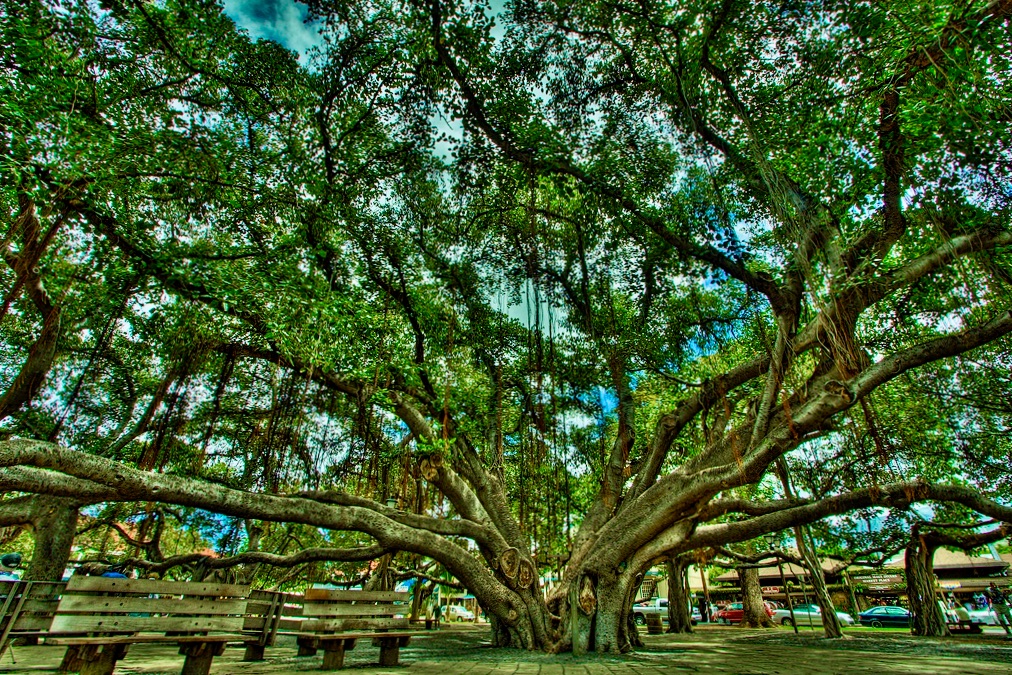
Maui’s iconic banyan tree in Lahaina partly inspired the name of our dive shop, Banyan Tree Divers Maui. This magnificent tree was brought to Lahaina in 1873, standing eight feet tall. Merchants imported the banyan tree from India and planted it between the harbor and Courthouse Square. Today, the banyan tree has grown to over sixty feet high, with sixteen trunks, providing shade for two-thirds of an acre.
There is an abundance of Hawaiian history to experience during your Maui vacation. But don’t forget to schedule a couple of scuba dives. So while you celebrate Hawaii, let our dive shop in Lahaina set up your shore diving lessons and tours. You can book with us knowing that every beginner and certified diver can explore the best Maui dive sites, like Airport Beach in Kaanapali, Olowalu Reef, and Mala Wharf in Lahaina. Travelers rank Banyan Tree Divers Maui as the best dive service in Lahaina because we commit to three goals:
|
#1 Safe and unforgettable Maui scuba diving experiences. |
|
#2 Protect Lahaina’s coral reefs and the fish that live there. |
|
#3 Connect with anyone who wants to join our scuba diving community. |
Scuba Diving Near The Banyan Tree
The best scuba diving in Lahaina offers vibrant corals and endemic marine life. For example, different species of moray eels make for a common sight along the reef. The impressive Yellow Margin Moray Eel species lives at Airport Beach and can grow up to four feet long! If you have the best of luck, you could find the magnificently colorful Dragon Moray or see the more plentiful White Spotted Moray hiding in crevices between the corals. Moray eels move fast and bite even quicker, so all scuba divers never place a hand or finger near the coral reef!
Turtles at Airport Beach in Kaanapali
Of course, most scuba divers visit Maui to see the giant Green Hawaiian Turtles that live near the shore. In Kaanapali, Airport Beach provides a massive dive site, so finding turtles here can be hit or miss if you go the wrong way. But on any given day, you should encounter at least one turtle!
Airport Beach is home to resident Hawksbill Turtles, which can be seen most often during the summer and fall. The Hawksbill represents a rare turtle species that most people don’t get to see anywhere in Maui!
You cannot find twenty-five percent of Maui’s sea life anywhere else. One of these endemic creatures is the small Hawaiian Damselfish. Scuba divers recognize them by their black-and-white colors and barking noises. These fish bark at you if you dive too close to their eggs! Another local animal is the massive Hawaiian Monk Seal. Adult seals weigh around 500 pounds and are not shy about scuba divers. If you are lucky enough to see a Monk Seal, for your safety, please keep a reasonable distance while observing your new friend.
Sharks at Mala Wharf in Lahaina
Banyan Tree Divers Maui even offers lessons and tours at dive sites near the famous Banyan Tree in Lahaina, such as the excellent Mala Wharf. Also known as Mala Pier and Mala Boat Harbor. Here, you are almost guaranteed to see multiple Green Turtles with White-tip Reef Sharks! As if that’s not enough, you can also see well-camouflaged frogfish, colorful crabs, and scorpionfish.
When visiting Mala Wharf, scuba divers must always be mindful of the consequences of negative interactions underwater. You can do your best to limit negative moves by maintaining perfect buoyancy control at all times. Of course, take your best underwater photos and videos, but please never kick or touch the corals and marine life. If you lack excellent buoyancy control, refrain from scuba diving with a camera or GoPro.
Scuba Diving Safety Tips
Make sure you enter and exit every dive site legally and safely. Every location has different rules and regulations, so be sure to communicate with your PADI professional instructor before assembling your scuba equipment.
Each dive site has its own safety rules, so you should visit most Lahaina dive locations only on a guided scuba tour. These spots include Mala Wharf, Airport Beach, Black Rock, Kapalua Bay, North Kaanapali Reef, West Maui Turtle Town, and Olowalu Reef (Mile-Marker 14).
